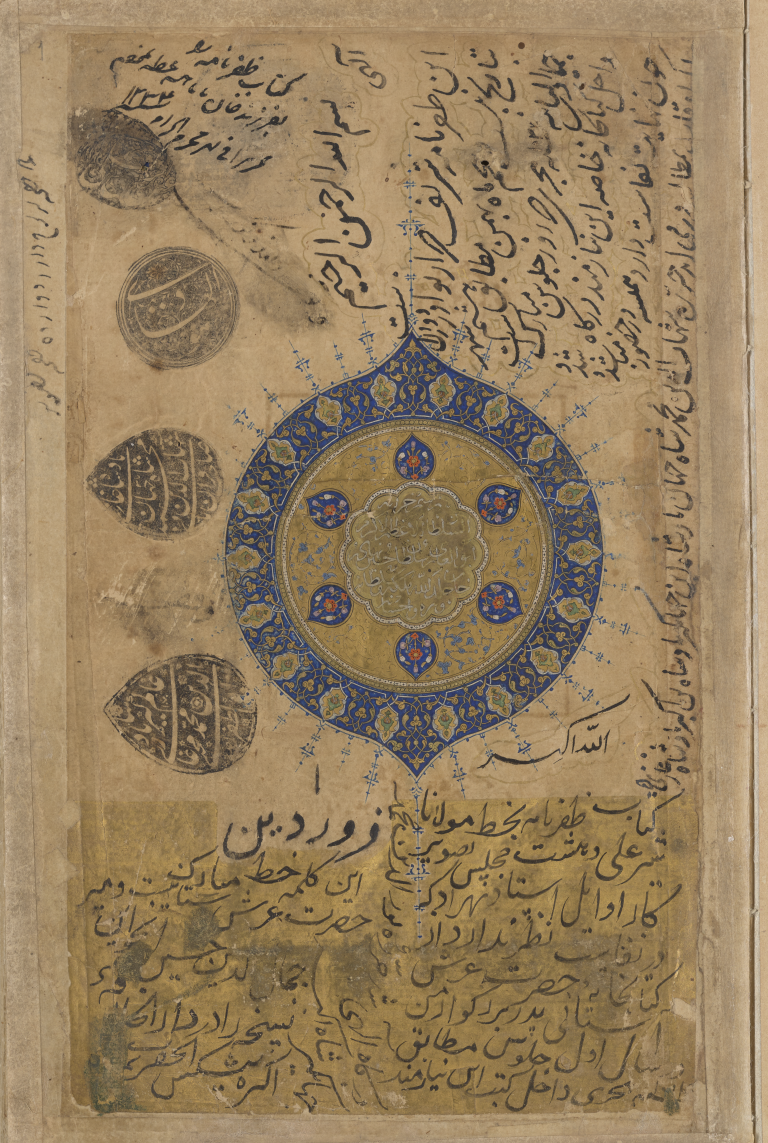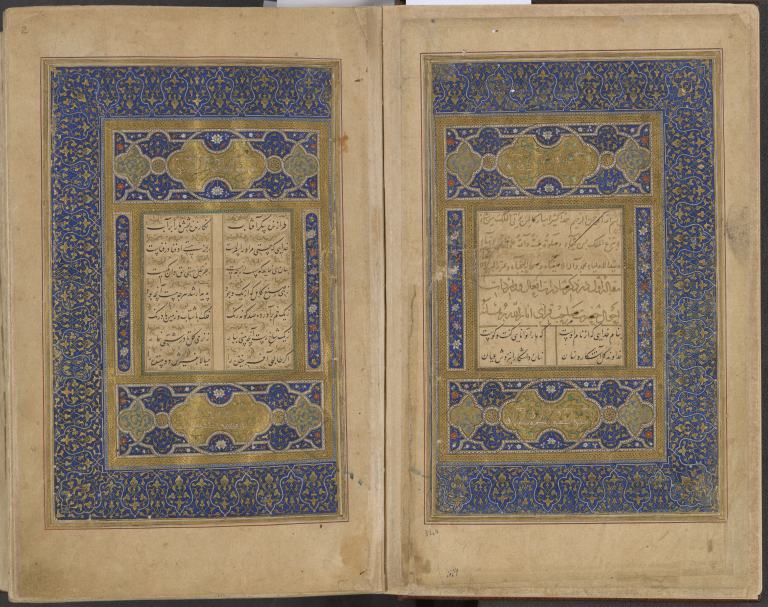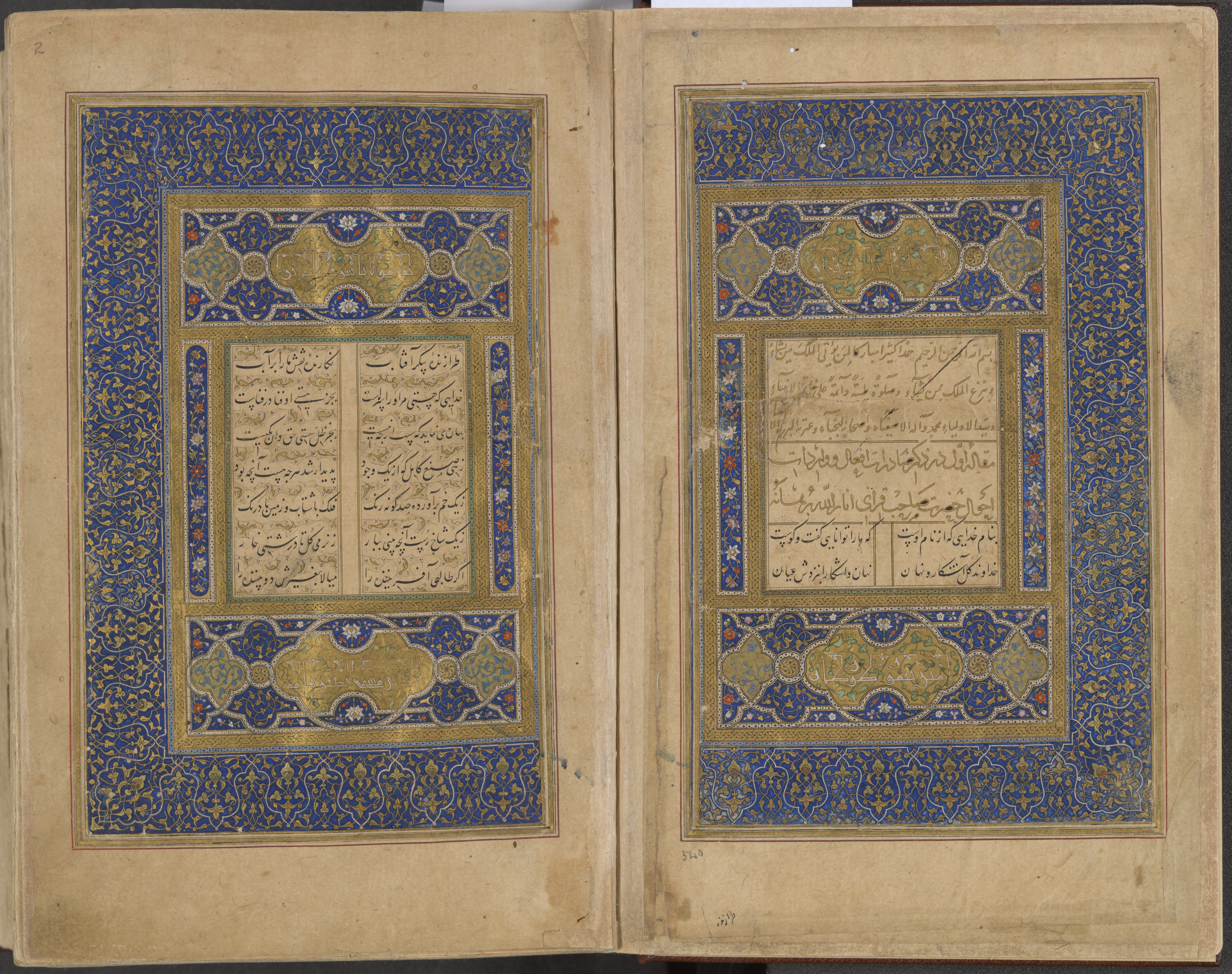The library of the Johns Hopkins University in Baltimore, United States, contains a Persian manuscript known as the “Garrett Zafarnama.” This small volume—easily held in one hand (23.5 x 15.2 cm, 539 folios)—began life in the 1460s in a prince’s milieu, likely in Herat, Afghanistan. As we can tell from notes and stamps on the first folio, it then spent more than a century in the library of the Mughal kings of India, eventually making its way to Iran in the nineteenth century. From there it passed to European collectors and dealers, eventually being sold to the American philanthropist and collector Robert Garrett in Paris in 1925. It was bequeathed to Johns Hopkins as a part of the Garrett family estate in 1942.
Most of the manuscript consists of the text of the Zafarnama (Book of Victory), a celebratory chronicle of the exploits of Tamerlane (d. 1405), a grand conqueror whose armies waged a near constant, thirty-five-year war (1370–1405) across a vast region in Eurasia. Aspects of Tamerlane’s legacy are discussed in other parts of this book as well (“Genealogies” in chapter 2 and “Grave of a Living King” in chapter 7). This work’s author, Sharaf ad-Din Yazdi (d. 1454), was a famous man of letters of his times and was commissioned to compose the work by Tamerlane’s successors who wished to solidify their ancestor’s memory for the sake of their own political legitimacy. The Zafarnama was read and copied widely and came to be seen as the prime example of a style of writing about the political past that would be emulated in multiple languages for hundreds of years after its composition.
The Garrett Zafarnama is famous for its distinctive paintings. There are only six of these, each one placed across two pages at various places in the manuscript. Between their small size and exquisite design and execution, the paintings have a jewel-like quality, remarked upon by early modern kings and modern scholars and connoisseurs who have had the chance to see them physically. While unlikely to be the work of the great painter Kamal ad-Din Behzad (d. 1535) as suggested by some interpreters, they are among the finest examples of the art of Persian miniature.
















